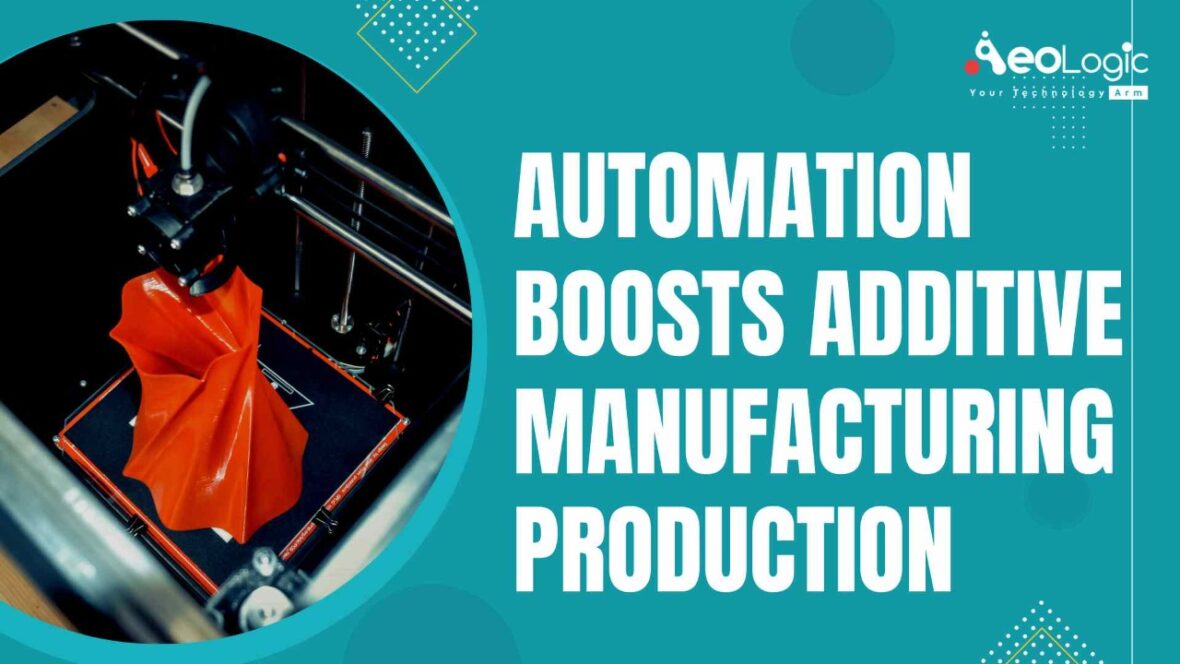Automation in additive manufacturing production is evolving day by day. Since more companies implement 3D printing/additive manufacturing technologies as part of their production operations. It is usual for volume bottlenecks to grow. And like any piece of equipment, there are certainties of equipment downtime and failed print jobs. All of which can drive to production deadlines being missed. Plastic injection molding, metal stamping, and metal casting are traditional processes that form the backbone of manufacturing. Conventionally, there’s no better way to mass-produce plastic or metal parts.
However, additive manufacturing, which allows engineers to combine parts and generate components in complex shapes, is quickly becoming an alternative. The technology is developing from the world of low-volume prototypes to high-volume production-ready parts.
Until now, one of the only things keeping 3D printing back from broader usage has been a lack of automation. However, recent applications involving automated guided vehicles (AGVs), high-speed printers, collaborative robots, and other equipment will allow manufacturers to boost throughput, control quality, speed time, and, reduce the cost to market.
Also read: How to Utilize AI in Additive Manufacturing
Let us consider the benefits of automation in additive manufacturing production.
Lesser operating costs
Depending on the task, robots can complete the work of three to five people. Additionally, about savings on the cost of labor, energy savings can also be important due to lower heating requirements in automated operations. Robots streamline processes and enhance part accuracy. This means decreased material waste for your operation.
Increased worker safety
Automated cells eliminate workers from hazardous materials and dangerous tasks. Your employees will thank you for safeguarding and protecting them against the hazards and dangers of a factory environment.
Decreased factory lead times
Automation can keep your process in-house, enhance process control, and considerably decrease lead times compared to going overseas or outsourcing.
Increased ROI
Automation solutions are based on your unique requirements and goals and pay for themselves quickly. The reasons are lower operating costs, reduced lead times, increased output, and more.
Boost your business performance with our automation solutions!
Ability to be more competitive
Automated units enable you to reduce cycle times and cost-per-piece. While enhancing quality. This enables you to better compete on a global scale. In addition, the flexibility of robots allows you to restructure a unit to exceed the potential of your competition.
Improved production output
A robot has the potential to work unattended, at a constant speed, 24/7. That means you’ve got the capability to generate more. New products can be more quickly incorporated into the production process. And new product programming can be operated offline without any disruption to existing processes.
Consistent and enhanced part production and quality
Automated units usually perform the manufacturing process with less variability than human workers. Hence the outcome is higher control and reliability of product quality.
Smaller environmental footprint
By streamlining processes and equipment, decreasing scrap, and incorporating less space. The automation executes less energy. Minimizing your environmental footprint can save real money.
Better planning
Constant production by robots enables a shop to reliably predict timing and costs. Since, that forecasting allows a tighter margin on almost any project.
Decreased need for outsourcing
Automation in additive manufacturing production units has large amounts of potential capacity concentrated in one compact system. This permits shops to produce parts in-house that have previously been outsourced.
Optimal use of floor space
Robots are manufactured on compact bases to fit in confined spaces. In addition to being mounted on the floor, robots can be mounted on ceilings, walls, rail tracks, and shelves. Also, they can perform functions in limited spaces. Hence saving your valuable floor space.
Maximize labor
Over the next 30 years, statistics predict that more than 76 million baby boomers will retire. And only 46 million new workers will be available to replace them. However, during this time, your requirement for labor will continue. Therefore, making automation a real and viable solution.
Increased output and efficiency
- JIT manufacturing-friendly and 24/7 production
- Higher uptime with historic efficiency figures above 90 percent
- Secondary operations ability — deburring, gauging, washing, etc.
- Real-time factory communications with automated units and machines
- Swift changeover for multiple parts, tooling, and algorithms
Improved system versatility
- Easily retooled, system flexibility, and repositioned for new production algorithms
- Robots have the potential to easily switch between a wide range of products. Moreover, without having to completely rebuild production lines
- Mixed-flow production method enables flexibility in adjusting to demand fluctuations
- Robots are able to instantaneously learn new processes
- Decreased changeover time
Also read: How IT Works: Internet Of Things (IoT) For Manufacturing
Conclusion
To sum up, automation in additive manufacturing production will allow businesses to go from functional specifications to completely customized products. Furthermore, with reduced human labor. Automation of all levels will ultimately drive down the overall cost of manufactured products. This, in turn, will enable additive manufacturing to be a cost-effective solution for a wide range of products.
Kindly contact Aeologic Technologies if you need help with integrating technologies in your business!
FAQs
What are the challenges encountered in the additive manufacturing process?
Subsequently, technological challenges are there in the additive manufacturing process. Such as slow production speeds, manual post-processing, lack of industry-wide standards, lack of investment, and many more.
What technology is used for automation?
Robotic Process Automation (RPA) is developed to cater to the requirement for automating recurring business processes. Moreover, the technology allows you to build a virtual workforce via robots that automate manual tasks.






